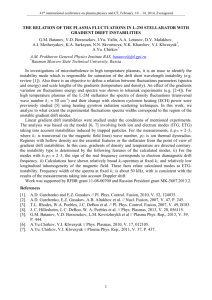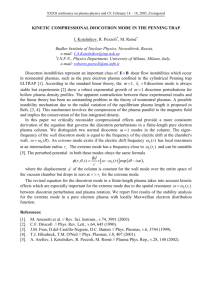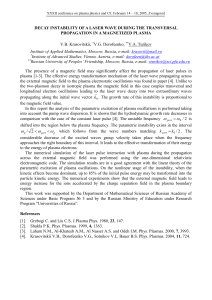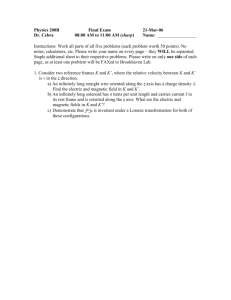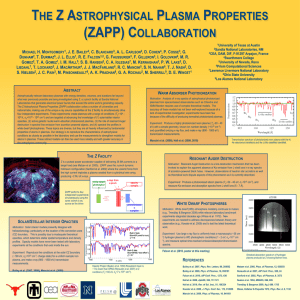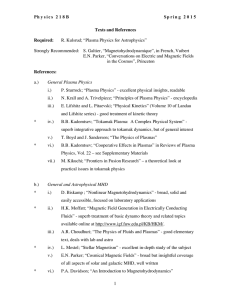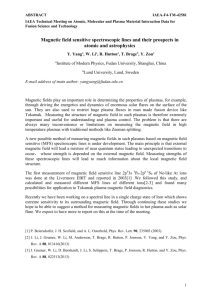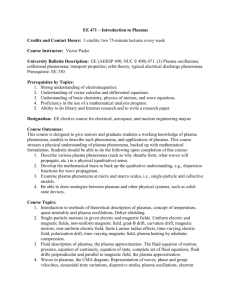drift instabilities of the plasma with trapped electrons in tokamak
advertisement
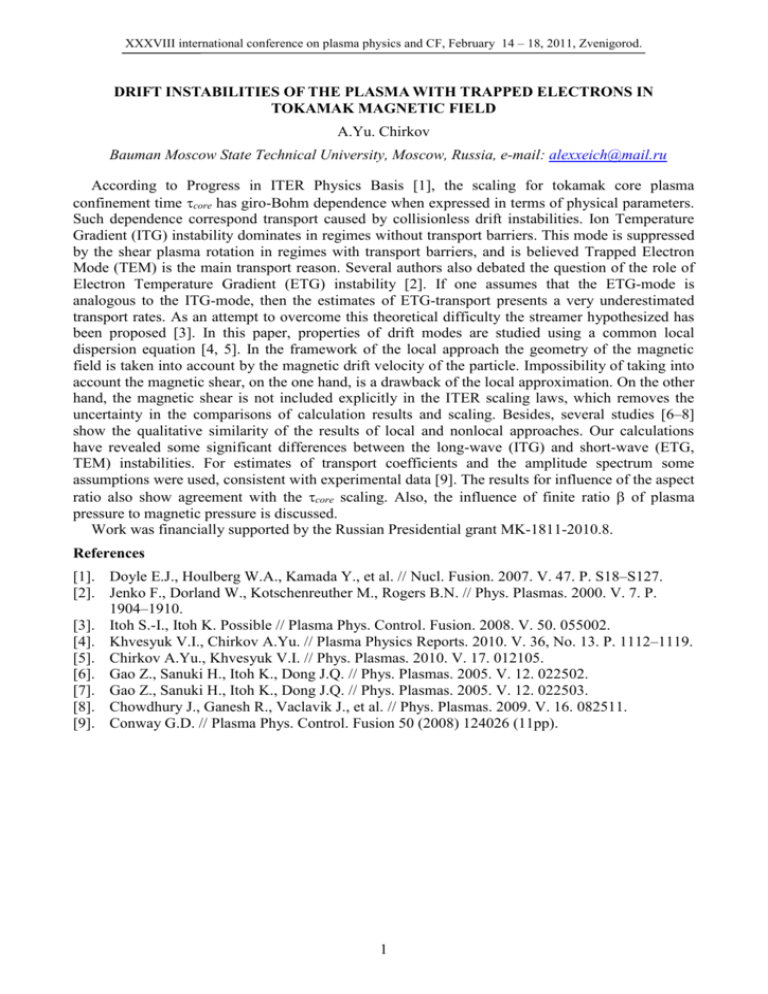
XXXVIII international conference on plasma physics and CF, February 14 – 18, 2011, Zvenigorod. DRIFT INSTABILITIES OF THE PLASMA WITH TRAPPED ELECTRONS IN TOKAMAK MAGNETIC FIELD A.Yu. Chirkov Bauman Moscow State Technical University, Moscow, Russia, e-mail: alexxeich@mail.ru According to Progress in ITER Physics Basis [1], the scaling for tokamak core plasma confinement time core has giro-Bohm dependence when expressed in terms of physical parameters. Such dependence correspond transport caused by collisionless drift instabilities. Ion Temperature Gradient (ITG) instability dominates in regimes without transport barriers. This mode is suppressed by the shear plasma rotation in regimes with transport barriers, and is believed Trapped Electron Mode (TEM) is the main transport reason. Several authors also debated the question of the role of Electron Temperature Gradient (ETG) instability [2]. If one assumes that the ETG-mode is analogous to the ITG-mode, then the estimates of ETG-transport presents a very underestimated transport rates. As an attempt to overcome this theoretical difficulty the streamer hypothesized has been proposed [3]. In this paper, properties of drift modes are studied using a common local dispersion equation [4, 5]. In the framework of the local approach the geometry of the magnetic field is taken into account by the magnetic drift velocity of the particle. Impossibility of taking into account the magnetic shear, on the one hand, is a drawback of the local approximation. On the other hand, the magnetic shear is not included explicitly in the ITER scaling laws, which removes the uncertainty in the comparisons of calculation results and scaling. Besides, several studies [6–8] show the qualitative similarity of the results of local and nonlocal approaches. Our calculations have revealed some significant differences between the long-wave (ITG) and short-wave (ETG, TEM) instabilities. For estimates of transport coefficients and the amplitude spectrum some assumptions were used, consistent with experimental data [9]. The results for influence of the aspect ratio also show agreement with the core scaling. Also, the influence of finite ratio of plasma pressure to magnetic pressure is discussed. Work was financially supported by the Russian Presidential grant MK-1811-2010.8. References [1]. Doyle E.J., Houlberg W.A., Kamada Y., et al. // Nucl. Fusion. 2007. V. 47. P. S18–S127. [2]. Jenko F., Dorland W., Kotschenreuther M., Rogers B.N. // Phys. Plasmas. 2000. V. 7. P. 1904–1910. [3]. Itoh S.-I., Itoh K. Possible // Plasma Phys. Control. Fusion. 2008. V. 50. 055002. [4]. Khvesyuk V.I., Chirkov A.Yu. // Plasma Physics Reports. 2010. V. 36, No. 13. P. 1112–1119. [5]. Chirkov A.Yu., Khvesyuk V.I. // Phys. Plasmas. 2010. V. 17. 012105. [6]. Gao Z., Sanuki H., Itoh K., Dong J.Q. // Phys. Plasmas. 2005. V. 12. 022502. [7]. Gao Z., Sanuki H., Itoh K., Dong J.Q. // Phys. Plasmas. 2005. V. 12. 022503. [8]. Chowdhury J., Ganesh R., Vaclavik J., et al. // Phys. Plasmas. 2009. V. 16. 082511. [9]. Conway G.D. // Plasma Phys. Control. Fusion 50 (2008) 124026 (11pp). 1
